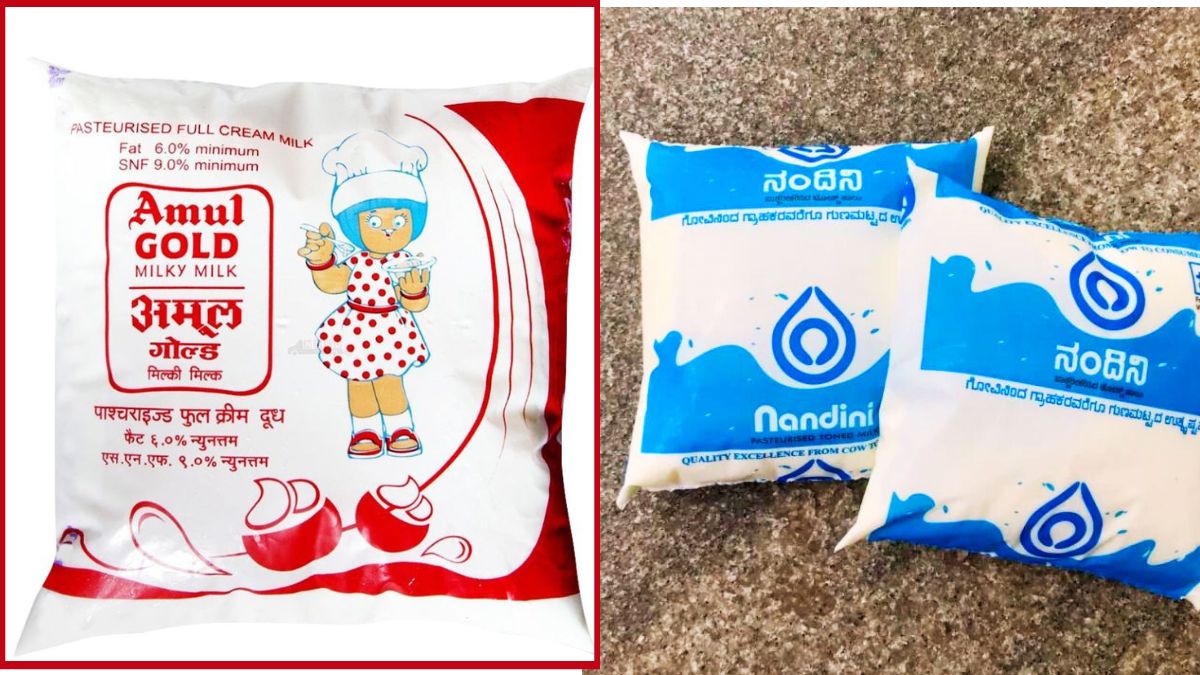The Amul versus Nandini debate has become a talking point in the run-up to the Karnataka Assembly elections, with the Congress accusing the BJP of trying to foist the Gujarat based cooperative on the people of the southern state, thus harming the interests of lakhs of farmers.
The controversy erupted after Union Home Minister Amit Shah, while on a trip to Karnataka, stated that there was a need to merge cooperatives, in order to enhance productivity. The observation was interpreted as a transgression of the state’s autonomy and an attempt by the Centre to undermine the local milk brand.
The political class is seeing politics behind the merger. Even BJP’s senior leaders have sought the intervention of their top Central functionaries to clear the air on this issue. Chief Minister Basavaraj Bommai has stated that there was no proposal to merge Nandini with any other product.
There are multiple dimensions of this matter, and it is not without reason, that it could influence the Assembly campaign in the only BJP ruled southern state. Amul may have announced its plans to sell select products online in Bengaluru, but simultaneously it has tried to clarify that it was not entering the market to displace Nandini.
It should be clearly understood that Amul despite being based in Anand in Gujarat is a brand the entire nation is proud of. It has nothing to do with either the Congress or the BJP but is a household name in virtually every part of the country. It is sold in both Punjab and Haryana where the local milk brands are far more superior, but it has a market and clientele of its own.
Amul is the outcome of the successful cooperative movement in Gujarat which would not have been possible had Varghese Kurien not taken the initiative in providing correct direction and leadership when it was needed the most. In fact, Kurien was the father of the White Revolution in the same way as M.S. Swaminathan was the pioneer of the Green Revolution, which made the nation self-sufficient in respect of its food demands.
Both these luminaries, in their own way, had national interests in mind and not that of any particular state. They were visionaries who laid the foundation of enterprises which made the whole country proud. It is another matter that these deserving personalities were not found to be worthy of “Bharat Ratna” by successive governments despite their tremendous contribution to mankind while lesser mortals, mostly because of political considerations, were honoured with this high and esteemed award.
Amul is to the country today what Air India has been for so many years. It hardly matters whether Amul is Gujarat-based since its reach and value is appreciated across the board. The organisation has diversified from selling butter and basic milk; it also markets chocolates, ice creams etc. In Delhi for instance, there are several Amul outlets but they are doing business even though Mother Dairy is selling more. Healthy competition offers a choice to the consumers and this should be the objective of those in power.
But if locals are feeling threatened by the entry of Amul, it is because they apprehend that the BJP was trying to appropriate Amul and make it look like a Gujarati product that would dominate every state.
The Opposition’s interpretation may be completely misplaced. In case of Amul, it is a national brand and by giving an impression, rightly or wrongly, that many local cooperatives could be merged with it, a political dimension has automatically got added.
There is symbolism in the move as well and there is nothing new in that. Every regime that takes over tries to leave its mark on the events that follow. This phenomenon happens throughout the world. When the European invaders tamed the Native Indians in the United States, they completely demolished the prevalent symbols and beliefs in a very ruthless manner. The Native Indians practised their own religions but at every reserve which was subsequently created for them, a big cross denoting the supremacy of Christianity was placed in the middle.
Back in India, Indira Gandhi, after she became Prime Minister, demolished many symbols which were dear to her father Jawaharlal Nehru. Rajiv Gandhi had his own style of functioning and his own projected emblems of power. P.V. Narasimaha Rao had his distinct style of operating and created his power architecture which may not have suited his party but was compatible with his own vision and functioning. Atal Bihari Vajpayee did not majorly alter the power structure due to political circumstances. Manmohan Singh’s era, had authority being controlled and regulated from elsewhere.
Modi has come to power riding on a massive popular vote. He has no constraints like Vajpayee had, and therefore is creating his own symbols. The new Parliament building, the Netaji statue at India Gate and the changes being brought about the Central Vista and surrounding areas are clearly also creating new symbols of power.
So, if the political class starts thinking that Amul is sought to being appropriated for political means, it should not be surprising. Between us.
Amul-Nandini debate underlines symbolism
- Advertisement -

